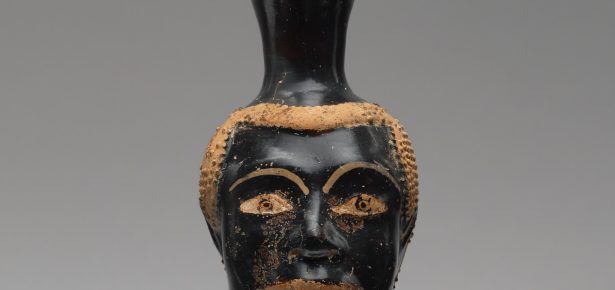
The discipline of Classics stands at a curious crossroads. While some of its advocates resist conflating the ancient Greco-Roman world with the twenty-first century, others weaponize Greco-Roman antiquity for modern gain. The latter stance becomes especially contentious when discussions of skin color enter the fray. Intent on correcting myopic perspectives, I foreground dynamic iterations of blackness in Untangling Blackness: Representations of Color in Greek Antiquity.
In Untangling Blackness, I tease apart temporal and geographic representations of blackness. Through an examination of Greek literature and media spanning from the fifth century BCE to the fourth century CE, I unearth numerous performances of blackness. That is, I treat various genres (tragedy, history, satire, art) as stages on which performances of blackness occur. Ancient authors and artists create characters who perform blackness, contemporary scholars analyze these subjects, and readers and viewers bring their own preoccupations to the fore. Alongside this inquiry, I remain aware of the modern prism through which twenty-first century viewers understand skin color. To this end, I uncover the silences, suppression, and misappropriation of blackness within modernity.
Shaped foundationally by performance studies and critical race theory, I draw from a wide range of thinkers who share a vested interest in the permutations of black skin color throughout time. For instance, the reproduction of Fred Wilson’s 1993 Grey Area (Brown version) on the book’s cover illustrates what a revamped archaeology of blackness can look like.
https://www.brooklynmuseum.org/opencollection/objects/5046
Wilson’s installation features five plaster copies of the famous bust of the Egyptian queen Nefertiti. Sculpted around 1340 BCE, the original limestone bust depicts a woman with light brown skin wearing a tall, flat-topped blue hat and elaborate neckwear. The color of each monochromatic head resembles the spectrum of human skin tones, ranging from off-white to dark brown. Through his creative rendering of Nefertiti, Wilson reframes the parameters of beauty as it relates to skin color. In addition, he rebuffs modern attempts to colonize Egypt without overlooking the historical context of his subject matter.
Taken together, ancient Greek sources and modern practitioners offer vibrant portrayals of blackness in antiquity that counteract overused, underexamined tropes of inferiority. As part of this intervention, Untangling Blackness offers a fresh starting point for a renewed analysis of black skin color that resists a static notion of “Greek antiquity” in the twenty-first century. The book confronts manifold tensions between the present and the past while also promoting a deep, plural history of blackness.
Latest Comments
Have your say!